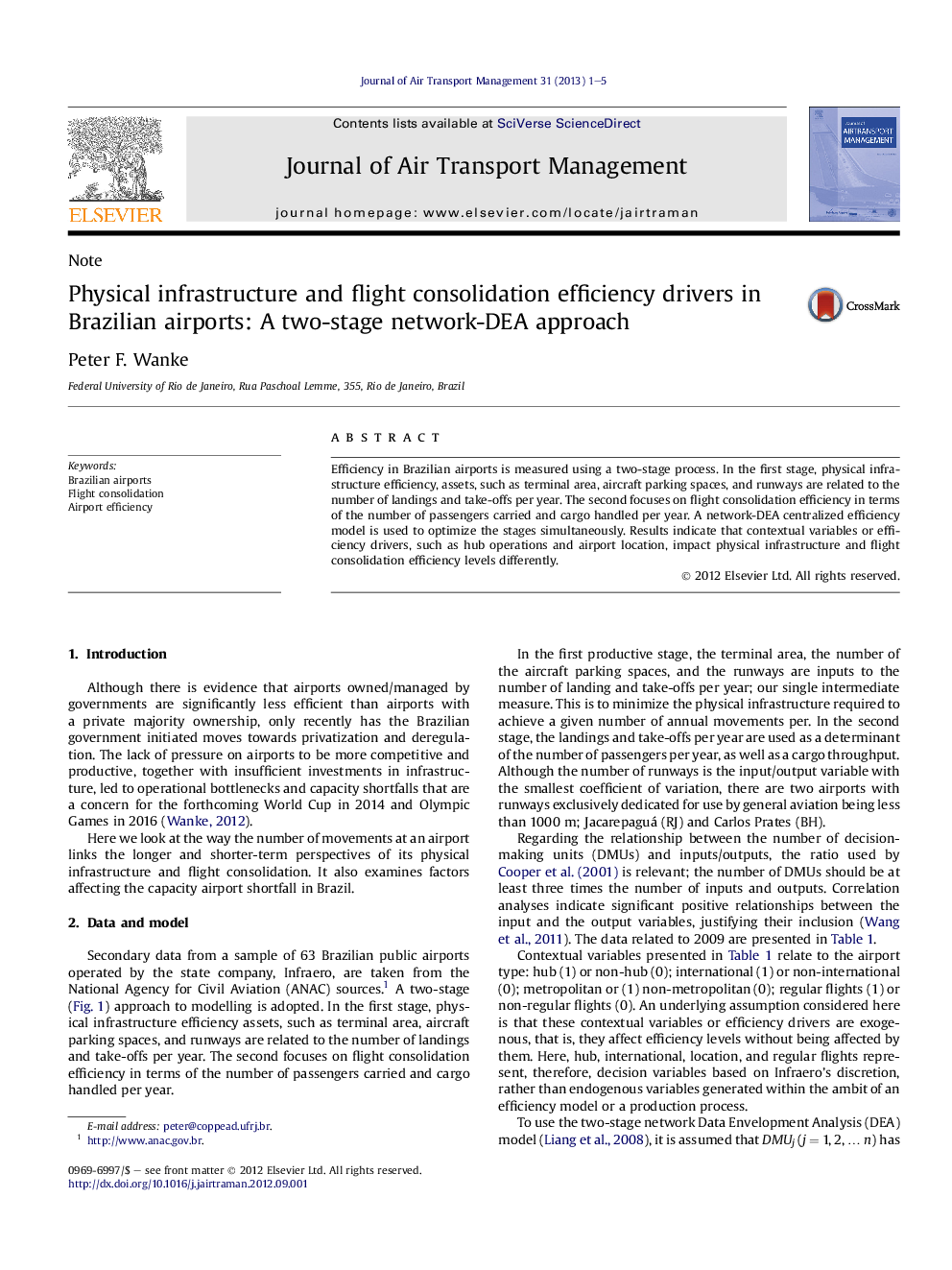| Article ID | Journal | Published Year | Pages | File Type |
|---|---|---|---|---|
| 1030899 | Journal of Air Transport Management | 2013 | 5 Pages |
Efficiency in Brazilian airports is measured using a two-stage process. In the first stage, physical infrastructure efficiency, assets, such as terminal area, aircraft parking spaces, and runways are related to the number of landings and take-offs per year. The second focuses on flight consolidation efficiency in terms of the number of passengers carried and cargo handled per year. A network-DEA centralized efficiency model is used to optimize the stages simultaneously. Results indicate that contextual variables or efficiency drivers, such as hub operations and airport location, impact physical infrastructure and flight consolidation efficiency levels differently.
► Efficiency in Brazilian airports is measured using a two-stage DEA model. ► In the first stage, assets are used to accomplish a number of movements per year. ► In the second stage, these movements allow passengers and cargoes to be carried. ► Results indicate that efficiency drivers impact these stages differently.
